Lumens in watts: comparison, conversion and best practice examples
Converting lumens into watts, comparing and contrasting different light sources is the central topic of this article! Clear tables, explanations of the units, practical examples and important additional information are an integral part of this article.
In the past, light sources were usually specified in watts to describe their brightness. The approach “the more power, the brighter” was basically ok within a technology (e.g. light bulb), but it no longer makes sense when comparing with other light sources, as the efficiency(luminous efficacy) differs here.
Today, this practice has changed and the brightness is specified in lumens, which better describes the actual light output of a light source and is much more meaningful. In this article, we explain the differences between watts and lumens and how to compare and calculate these units. Finally, we give tips on what you should look out for when selecting light sources.
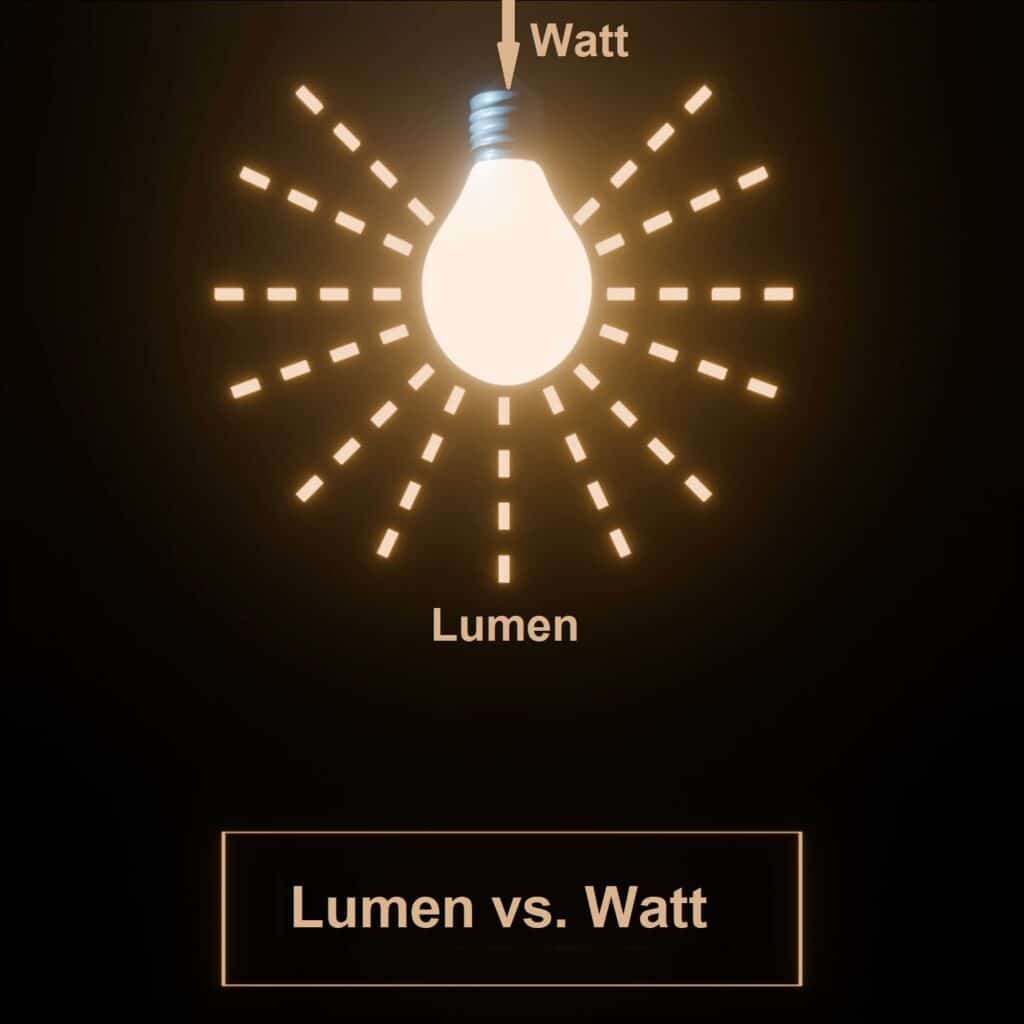
What are watts and lumens?
Watt indicates how much electrical power a lamp consumes, while lumen describes the brightness – i.e. how much light a lamp actually emits.
Watt
Watt is a unit of measurement for electrical power. In the past, light bulbs were classified in watts to measure the energy they consumed. A higher wattage meant a brighter bulb, but also higher energy consumption. The formula for calculating electrical power is:
Power (Watt: W) = Voltage (Volt: V) * Amperage (Ampere: A)
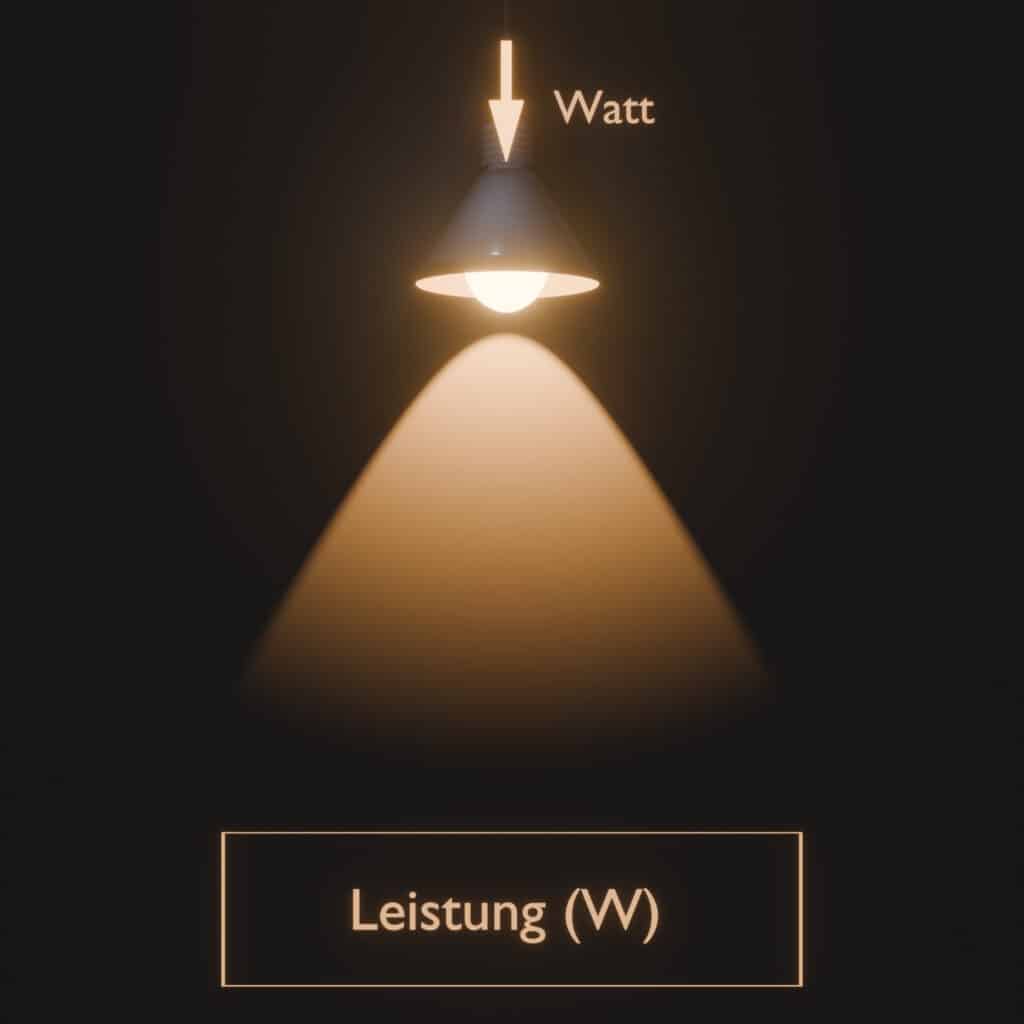
Lumen
Lumen is the unit of measurement for luminous flux and describes the brightness emitted by a light source. The higher the lumen, the brighter the light. The luminous flux can be calculated, but as it is much lower in reality, professional manufacturers measure it using sophisticated equipment! You can find more information on this in our in-house light laboratory.
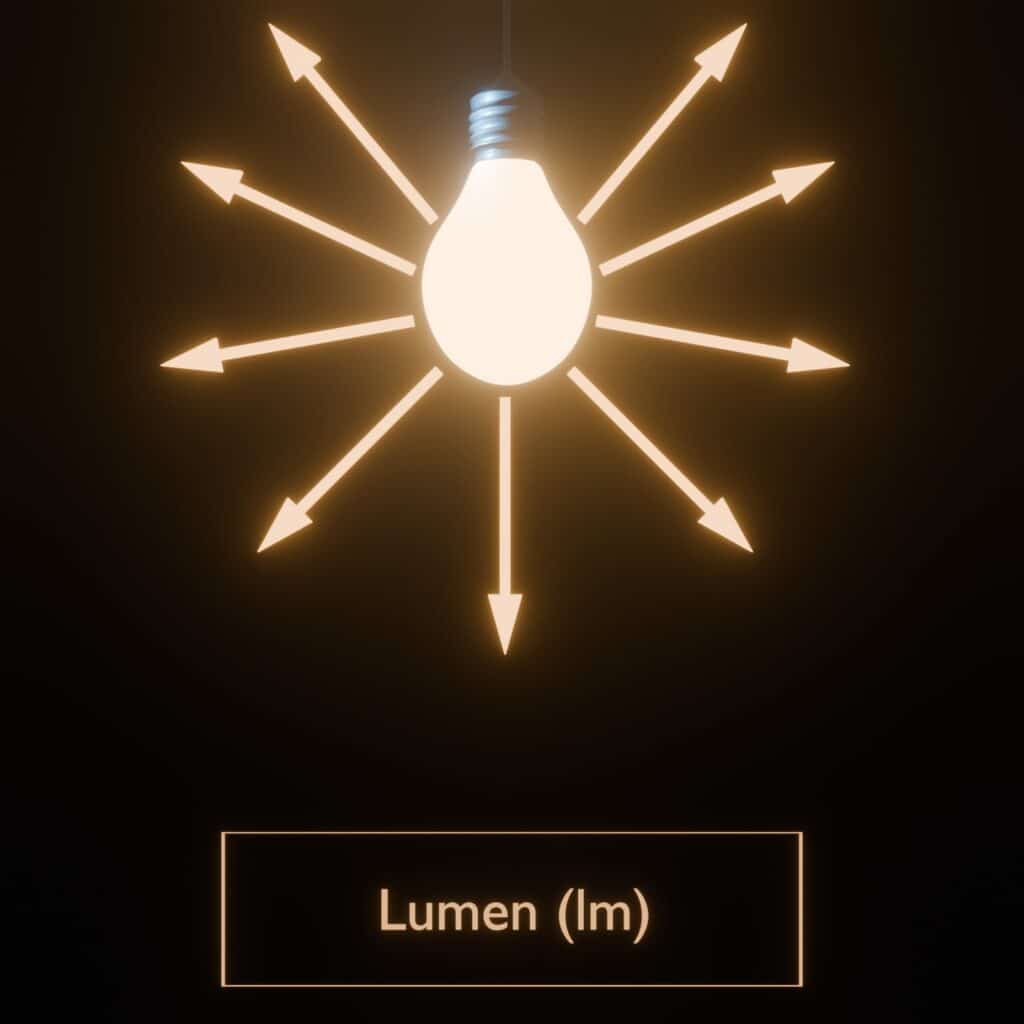
briefly noted: Difference between lumen and watt
- Lumen is the unit of luminous flux and describes the total amount of light emitted by the light source
- Watt is the unit of electrical power, describes the energy consumption and is essential for the question: Which power supply do I need for LED?
- The wattage says nothing about the brightness of the light source.
Converting lumens to watts
There are many reasons why you might want to convert lumens and watts. You have a specification or an idea of what luminous flux (unit lumen) the luminaire should have and would like to estimate the energy consumption and the resulting costs, for example.
The lumen in watt table is a practical overview for comparing light sources with different technologies in a simple way.
| Lumen | Glühlampe | Halogen | LED | Produkt Beispiel |
|---|---|---|---|---|
| 200 Lumen | 25 Watt | 20 Watt | 2-3 Watt | |
| 400 Lumen | 40 Watt | 35 Watt | 4-5 Watt | GU10 24V |
| 700 Lumen | 60 Watt | 52 Watt | 6-8 Watt | 24V Glühbirne |
| 900 Lumen | 75 Watt | 65 Watt | 7-9 Watt | 24V RGBW Spots |
| 1.350 Lumen | 100 Watt | 85 Watt | 11-14 Watt | 1m COB-LED-Streifen |
| 2.150 Lumen | 150 Watt | 125 Watt | 17-20 Watt | 24V Deckenleuchte |
| 3.000 Lumen | 200 Watt | 145 Watt | 26-30 Watt | 2.5m LED-Streifen 14.4W |
Note: it should be noted that these are average values and that other parameters (e.g. color rendering index, beam angle) should be taken into account for our human perception of brightness, as they have a significant influence.
Converting watts to lumens
| Glühlampe | Halogen | LED | Lumen |
|---|---|---|---|
| 25 Watt | 20 Watt | 2-3 Watt | 200 Lumen |
| 40 Watt | 35 Watt | 4-5 Watt | 400 Lumen |
| 60 Watt | 52 Watt | 6-8 Watt | 700 Lumen |
| 75 Watt | 65 Watt | 7-9 Watt | 900 Lumen |
| 100 Watt | 85 Watt | 11-14 Watt | 1.350 Lumen |
| 150 Watt | 125 Watt | 17-20 Watt | 2.150 Lumen |
| 200 Watt | 145 Watt | 26-30 Watt | 3.000 Lumen |
Note: It should be noted that these are average values and that other parameters (e.g. color rendering index, beam angle) should be taken into account for our human perception of brightness, as they have a significant influence. These parameters also have an influence on the output of the LEDs and therefore subsequently on the efficiency (luminous efficacy)
Would you like to replace your old incandescent lamps and halogen lamps with new LED lamps, for example? Then the watts in lumens table is the right place for you.
In this case, it helps just as much as if you want to develop a feeling for how bright 1000 lumens are.
The watts in lumens table is also a practical overview for easily comparing light sources with different technologies.
Example: You want to replace a 60 watt light bulb with modern LED lighting:
To do this, simply search for the 60 watt light bulb in the watts to lumens table. The same line shows that it emits around 700 lumens of light. You will then see that an LED light source of the same brightness requires only 6W. The saving of 54 watts can therefore be achieved by simply replacing the light source.
Compare the performance of LEDs with other light sources
The question often arises as to what wattage my new LED light source should have. Especially when an existing light source needs to be replaced. For this reason, we have compared LED, incandescent, halogen, energy-saving and compact fluorescent lamps in the following table.
Simply select the corresponding light source with the appropriate wattage and in the same line you will then find the corresponding wattage of the LED.
| LED | Glühlampe | Halogen | Energiespar- lampe | Kompakt- Leuchtstofflampe |
|
|---|---|---|---|---|---|
| 3 Watt | entspricht | 25 Watt | 20 Watt | 6 Watt | 6 Watt |
| 4 Watt | entspricht | 40 Watt | 35 Watt | 8 Watt | 9 Watt |
| 7 Watt | entspricht | 60 Watt | 52 Watt | 11 Watt | 12 Watt |
| 8 Watt | entspricht | 75 Watt | 65 Watt | 15 Watt | 15 Watt |
| 12 Watt | entspricht | 100 Watt | 85 Watt | 26 Watt | 20 Watt |
| 18 Watt | entspricht | 150 Watt | 125 Watt | 32 Watt | 32 Watt |
| 20 Watt | entspricht | 150 Watt | 125 Watt | 35 Watt | 35 Watt |
| 28 Watt | entspricht | 200 Watt | 145 Watt | 55 Watt | 40 Watt |
Note: it should be noted that these are average values and that these technologies also have differences in color rendering index and color temperature.
Important factors when selecting light sources
In addition to lumens and watts, there are other important parameters that you should consider when selecting light sources, which we explain below in a simple and understandable way. For more in-depth information, simply follow the relevant links and discover exciting topics in the field of lighting:
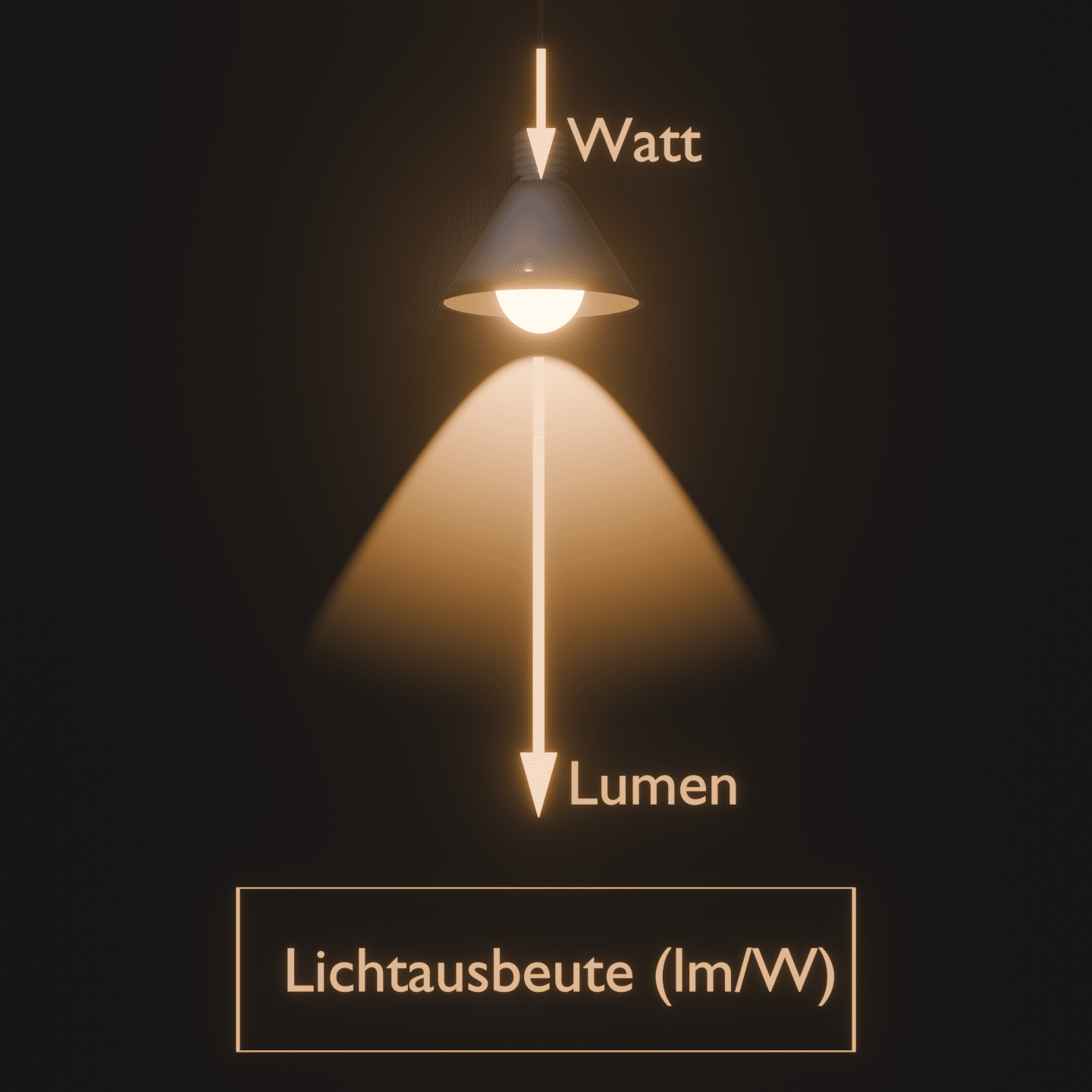
The luminous efficacy, measured in lumens per watt (lm/W), indicates how efficiently a light source produces light. Higher values mean higher efficiency and therefore lower electricity costs
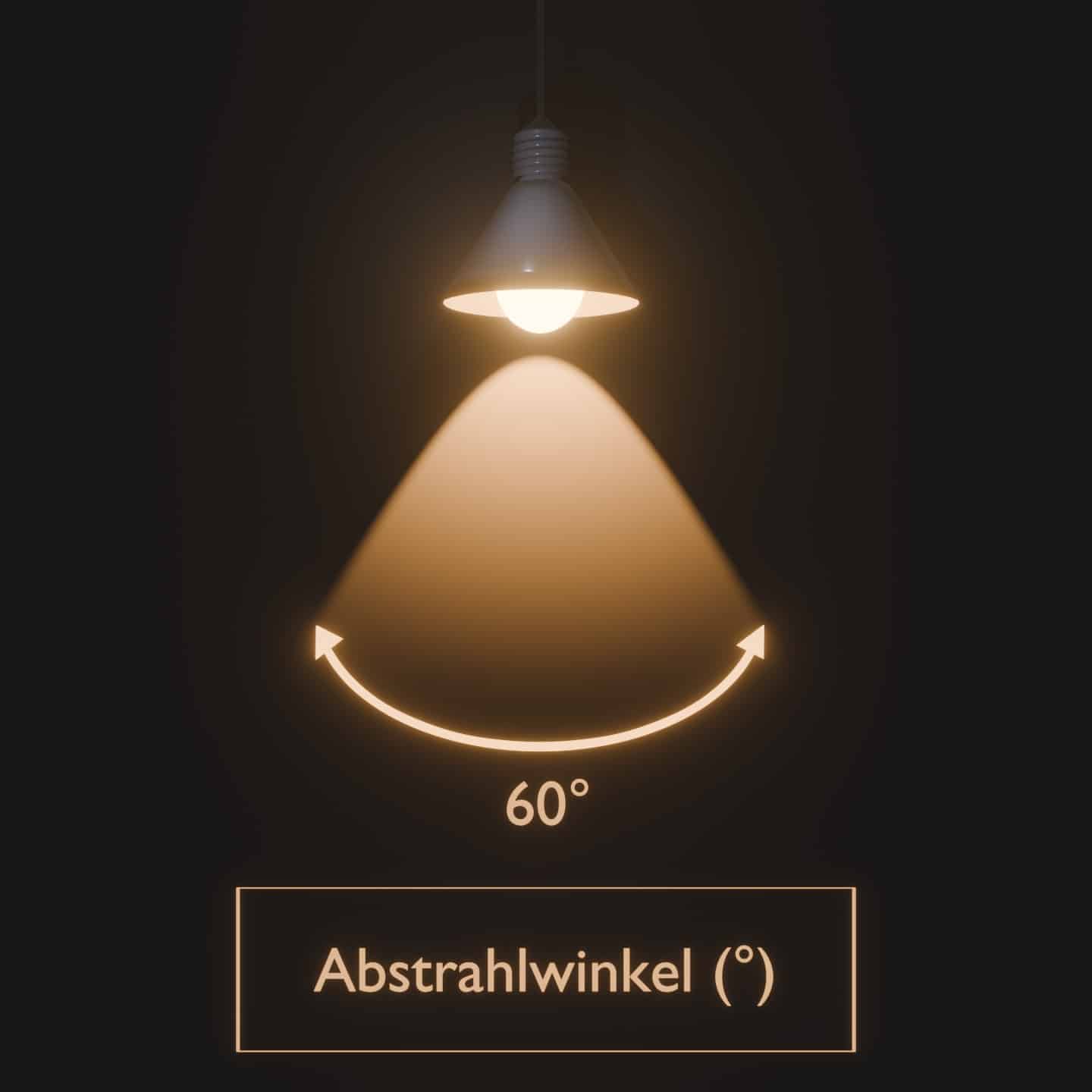
Beam angle (°)
The beam angle determines how widely the light from a light source is distributed. A small angle (e.g. 30°) is suitable for accent lighting, while a large angle (e.g. 120°) also emits light where it is not needed. For general lighting and LED spotlights, an angle of approx. 60° has proven effective.
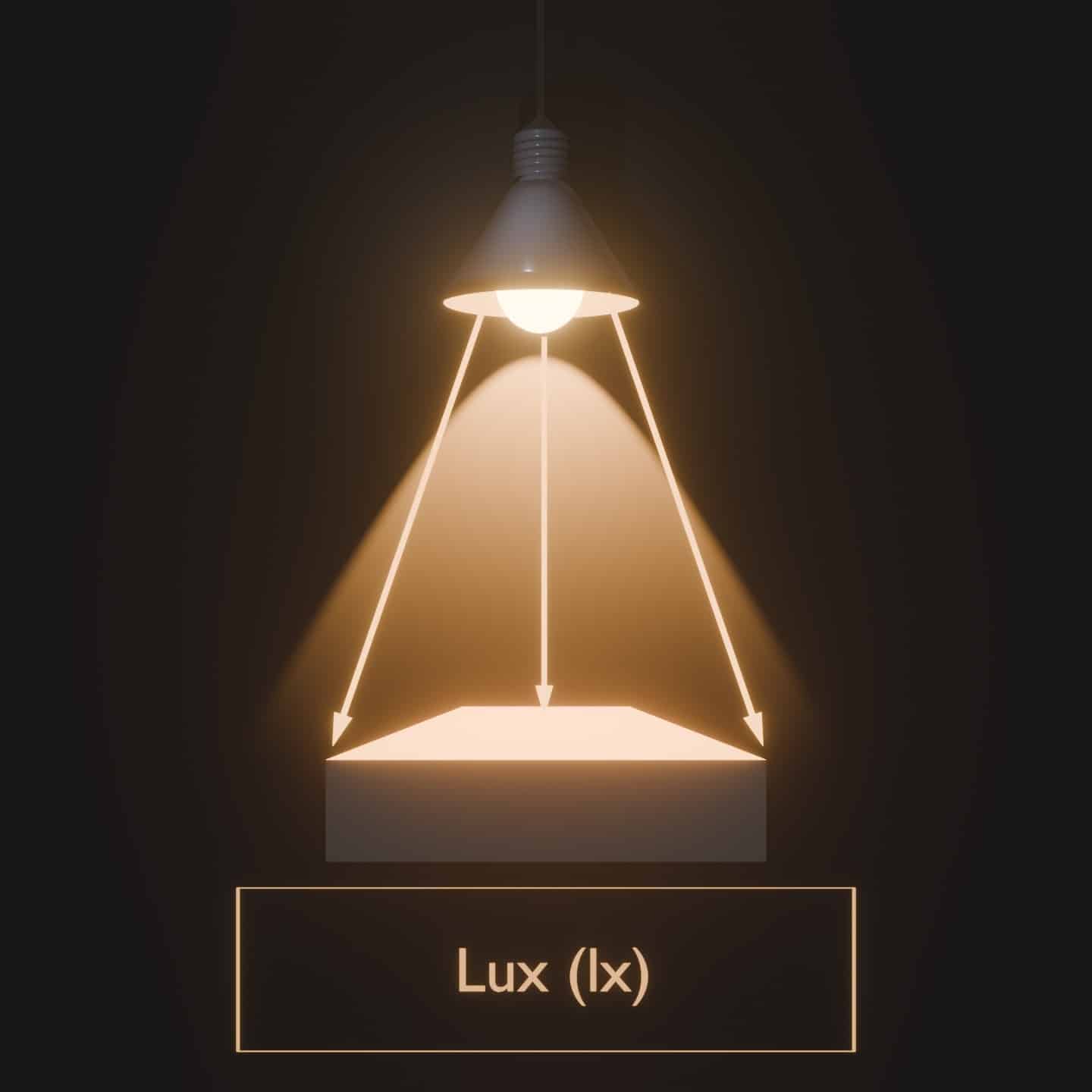
Lux is the unit of measurement for illuminance and indicates how much light falls on a certain surface. A higher lux value means more intensive lighting. Illuminance is the main unit of light for room lighting
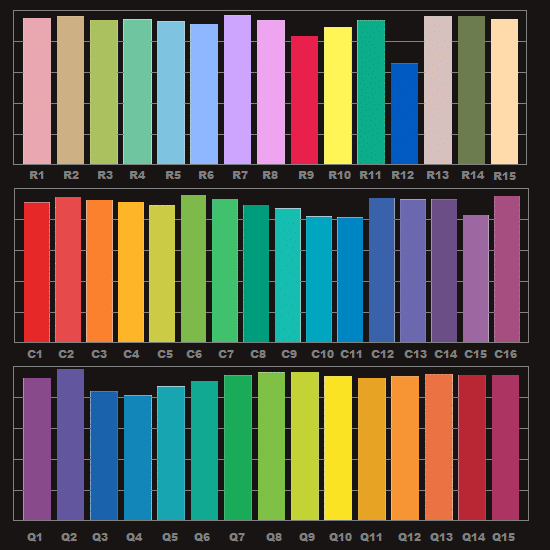
The CRI indicates how natural colors appear under the light of an illuminant. A CRI of 90 or higher is recommended for most applications. Although a higher color rendering index (comparison of CRI 80 and CRI 90) comes at the expense of luminous flux (10-15%), the significantly better quality of light is convincing – natural, harmonious lighting is guaranteed!
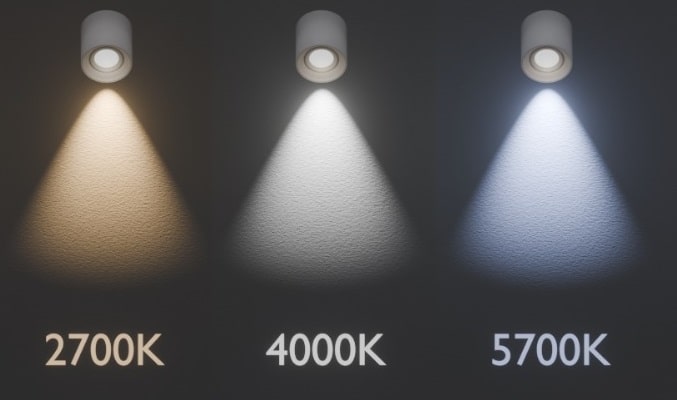
The color temperature is measured in Kelvin (K) and describes the color of the light. Warm white light is around 2700K to 3000K, neutral white light is 3500K to 4500K and daylight white light is over 5000K.
Here we recommend our article on CCT LED, as it not only explains CCT in detail, but also explains helpful areas of application.
Is every LED light source with the same number of watts equally bright?
No! The LED industry is constantly researching and developing, which in turn results in ever better LEDs (more information on light-emitting diodes). Every luminaire manufacturer has the choice of which LEDs to install in their luminaires. The choice here is huge, in simple terms from cheap to efficient. In addition, LEDs with a cooler color temperature (more blue component) are more efficient than the more popular warm white LEDs. As described above, the color rendering index also has a strong effect on the luminous efficacy. Finally, how well the manufacturer has mastered thermal design (an important quality criterion! The cooler the LEDs are operated, the more efficient and the longer-lasting the LED luminaire) and how efficiently the control electronics have been designed.
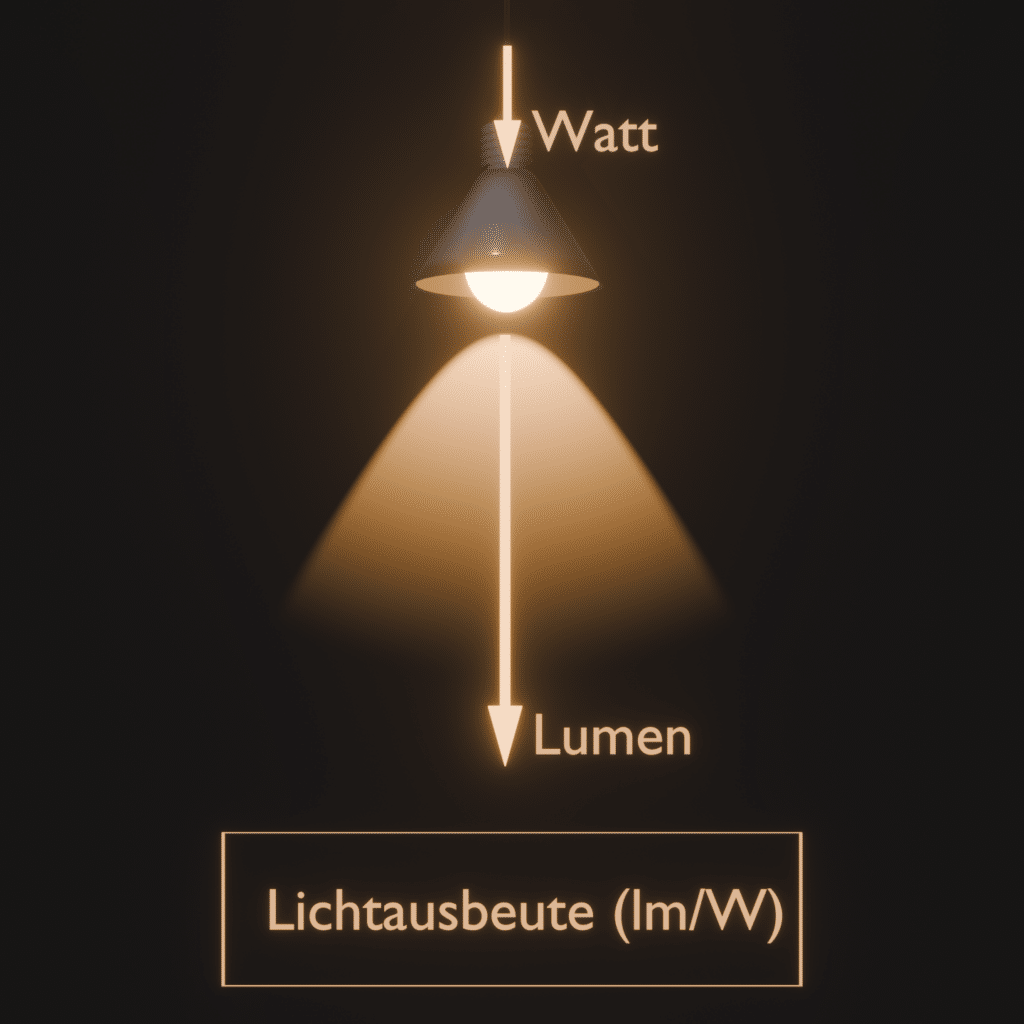
How many lumens do you need per m²?
| Raum | Lumen pro m² |
|---|---|
| Wohnzimmer | 100 bis 300 |
| Küche | 250 bis 300 |
| Schlafzimmer | 100 bis 150 |
| Kinderzimmer | 100 bis 200 |
| Bad | 250 bis 300 |
| Arbeitszimmer | 250 bis 300 |
| Abstellraum | 100 bis 300 |
| Keller | 100 bis 300 |
| Flur und Treppenhaus | 100 bis 150 |
After comparing lumens and watts, the question now arises, for example, how many lumens for the living room? This is precisely why we have developed our free online light calculation tool.
In contrast to the workplace, there are no precise regulations for illuminance in private homes. However, there are recommendations to help and these are included in the light calculator depending on the type of room. Basically, it can be said that the room is selected according to the activity and the higher the requirement for the visual task, the more light should be available. In other words. More light is needed in the kitchen than in the hallway.
Incidentally, this is referred to as basic lighting, which should be as uniform as possible in the room. In addition, brighter islands of light are desirable, which make the room more interesting and emphasize the interior design.
Conclusion
When buying light sources, it is important to understand the differences between lumens and watts. While watts indicate the energy consumption, lumens describe the brightness. In addition, factors such as color rendering, color temperature, luminous efficacy, beam angle and lux should be taken into account. Compared to other light sources, LEDs offer the greatest energy savings and a long service life, making them an economical and environmentally friendly choice.
With this knowledge, you can make informed decisions and optimize the lighting in your home or office!
We therefore hold
1.) Converting lumens to watts is essential for comparing different technologies
2.) With the lumen-watt table we offer a simple tool for comparing lumens and watts
3.) More efficient, modern light sources such as light-emitting diodes (LEDs) help the wallet, the environment and promote both safety and well-being in our homes.
LED and dimmability (230V vs. 24V lighting)
Incandescent and halogen lamps work with alternating voltage (230V). LEDs, on the other hand, work with a constant direct current, resulting in a voltage of approx. 3V per LED component.
For this reason, a complex electronic circuit that transforms and smoothes the AC voltage must be installed in every 230V LED light source.
If the light source is also dimmable, the demands on the electronic circuit increase even further. The result is often 230V lamps that cannot be dimmed below 20% and/or flicker on the hour(ripple control signal).
For these reasons, 24V DC voltage is extremely popular for lighting. The voltage only has to be converted once centrally, the efficiency (luminous efficacy) is increased and it is possible to control the LED with PWM to well below 1% without flickering or problems with the ripple control signal. 24V light sources are therefore extremely popular and 24V LED spots are now the standard in new buildings.
energy-efficient products in our online store
We place the highest value on excellent quality and high luminous efficacy. Our extensive range includes a wide variety of 24V LED spotlights, LED strips, LED lights and much more for indoor and outdoor use.
Many more guides, tutorials and more
Finally, we would like to recommend our service area. There you will find numerous other aids/contributions (e.g. lighting units, which recessed LED spotlights are the best?, …), tutorials (e.g. LED, DMX, …), free tools(lighting calculator) and much more:

